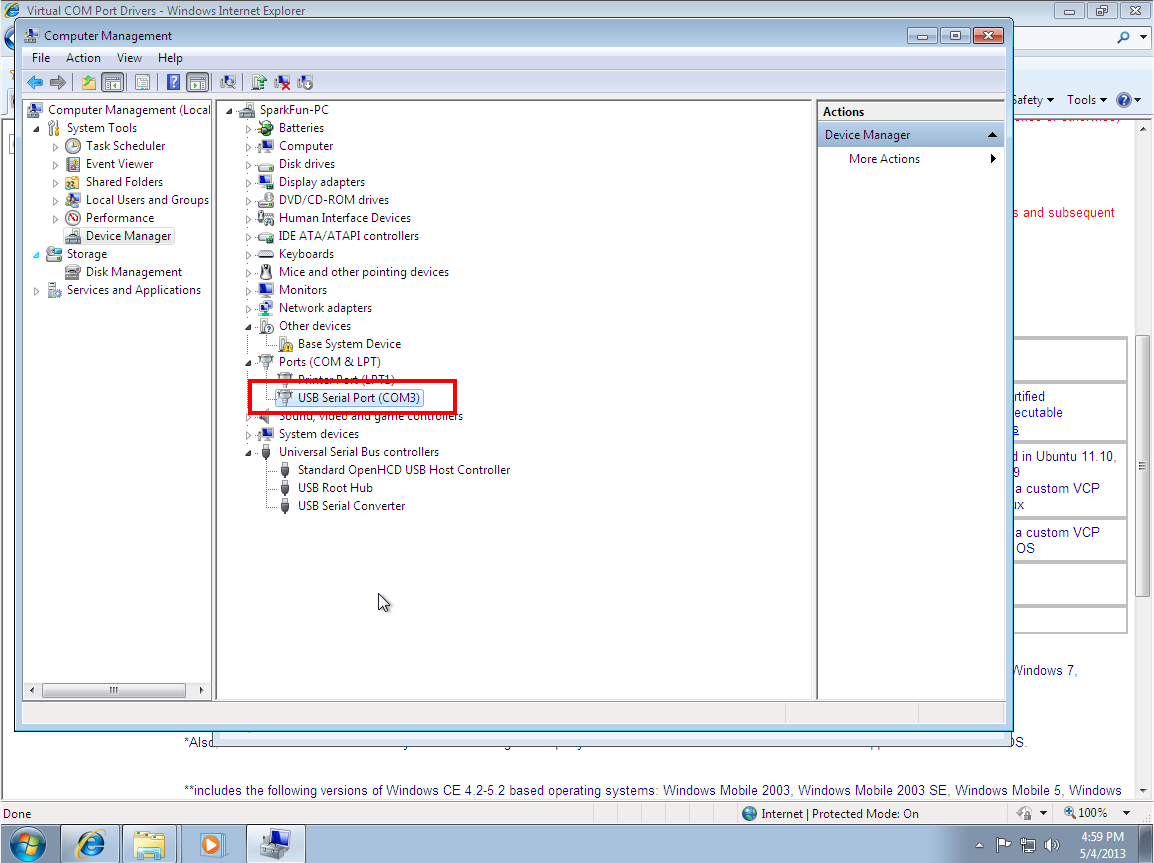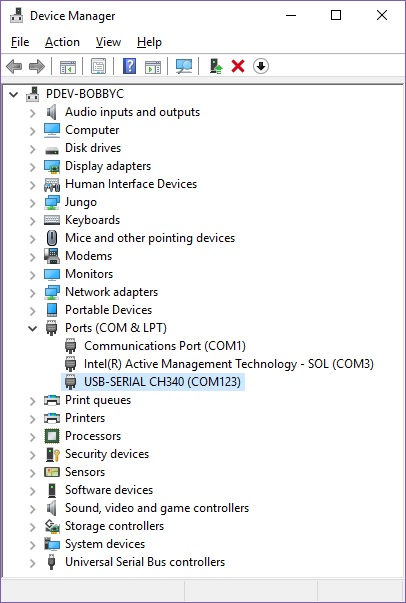Windows (ZIP)- Driver v3.4 (2016-09-27) Mac (ZIP)- Driver v1.5 (2018-07-04) Linux (ZIP)- Driver v1.5 (2018-03-18) USB-to-serial converters like the CH340 are great for uploading code to a microcontroller or viewing data from a GPS on a serial terminal. Connect MOST Serial Devices to a USB Port Microsoft Certified and Signed Drivers High-Speed Serial Best in Class Compatibility Data and Status LED Plug&Play Bus Powered The Ultimate USB Serial Adapter PC/MAC/Linux The USBG-232 is fully RoHS compliant and is CE and FCC approved. Also, after looking around, it seems that we, OS X users, have some other options to connect USB to serial adpaters. I found the Serial app, that is costly, but that has great comments. I don't know if that can be an alternative to the Keyspan driver that seem to be dying.
When possible, for Microsoft Windows users, we try to have drivers available for download through Windows Update for many of our products. For those products, simply plugging in your device should cause your PC to download and install drivers automatically if your PC has Internet access.

These drivers are static examples detailed in application note 197: The Serial Communications Guide for the CP210x, download an example below: AN197: The Serial Communications Guide for the CP210x. Download Software. The CP210x Manufacturing DLL and Runtime DLL have been updated and must be used with v6.0 and later of the CP210x Windows VCP Driver. Jul 12, 2011 Just for the records, i could successfully install the driver and use the USB-Serial adapter on Mac OS v10.8.2 (Mountain Lion). The only difference from the tutorial is that i had to alter GateKeeper configurations so a ‘non-signed’ driver could be installed.
For Mac OS X users with supported products, if a driver is not provided by the operating system, they must be downloaded and installed. For Linux/Unix users, support varies widely by product, kernel version, and OS distribution.
Click a product category below for driver downloads and installation instructions:
| USB Laptop/Tablet Docking Stations | USB Graphics Adapters | Thunderbolt 3 Docking Stations & Graphics Adapters | USB Network & WiFi Adapters | USB Serial Adapter | USB 2.0 Bluetooth 4.0 LE Adapter |
| USB Windows Transfer Cables | USB Microscope | MultiSeat Terminals | USB 3.0 PCI-e expansion card | Other or I’m not sure |
No driver or software installation required:
| USB Hubs, Switches, & Extensions | USB 3.0 SATA Drive Docks | USB Media Card Readers | USB Audio | USB Keyboards & Mice | Other or I’m not sure |
Firmware Updates:
| USB 3.0 Hubs & USB 3.0 Docking Stations | USB 3.0 SATA Hard Drive Docks and NVMe Enclosures |
USB port types and names
USB (Universal Serial Bus) is an industry standard for connecting computers and other devices. It's available with many types of ports, and each type has a unique shape. On Mac, USB is available with these ports, depending on your Mac model:
USB-A
Type USB-A ports are commonly called USB, USB 2, or USB 3 ports, depending on the USB specification they support. They aren't reversible, so a USB-A connector plugs into the port only when oriented correctly.
USB-C

Type USB-C ports are available on Mac as standard USB-C ports, Thunderbolt 3 ports, and Thunderbolt / USB 4 ports. They all look the same, and the connector plugs into the port in either orientation.
Learn more about identifying the ports on your Mac, as well as the adapters and cables you can use to connect older devices to type USB-C ports.
USB specifications
Usb-serial Ch340 Driver For Mac
USB specifications are important primarily when you want the most speed and power for your USB device, or your device needs more power or is using too much power. Every USB port supports a particular USB specification, which determines the port's maximum>USB specifications on MacData transferPower deliveryUSB 4Up to 10 GbpsUp to 15W at 5VUSB 3.1 Gen 2
Also known as USB 3.2 Gen 2
Up to 10 GbpsUp to 15W at 5VUSB 3.1 Gen 1
Also known as USB 3.2 Gen 1 or USB 3
Up to 5 GbpsUp to 900 mA at 5VUSB 2.0
Up to 480 MbpsUp to 500 mA at 5VUSB 1.1
Up to 12 MbpsUp to 500 mA at 5V
To learn which specification is supported by a type USB-A or type USB-C port on your Mac model:

- Choose Apple menu > About This Mac, click Support, then click Specifications.
- Check the System Information app for more details, including about USB devices connected to USB ports on your Mac. Select USB in the sidebar, then select a USB bus on the right.
Get the best performance from your USB devices
USB specifications all work with each other, but speed and power are limited by the cable or device that uses the earliest specification. For example, if you connect a USB 3 device to USB 2 port, your device is limited to USB 2 speeds, and it can't draw more power from the port than can be delivered over USB 2. In other words, to get the best performance, make sure that the USB port on your Mac and the USB cable to your device meet or exceed the USB specification of the device itself.
Usb Serial Drivers For Mac Download
If your Mac doesn't recognize a USB device after you plug it into your Mac:
- Check all connections: Unplug the device from your Mac, then plug it back in, and make sure that all cables and adapters are securely connected at both ends. Test with another cable or adapter, if available.
- Plug the device directly into your Mac instead of a USB hub or other device, and if necessary test with a different USB port on your Mac or device.
- Some devices need their own software, such as drivers or firmware. Others work without additional software. Check with the maker of your device, and install all available Apple software updates as well.
- If your device came with an AC power adapter, use it. Some devices can be powered by the USB port on your Mac. Others need more power than your Mac can provide.
- Restart your Mac.
Mac Serial To Usb Adapter
Learn more
Usb 3.0 Driver Mac
- USB 3 devices can create wireless interference that affects Wi-Fi and Bluetooth devices. Learn how to resolve Wi-Fi and Bluetooth issues caused by wireless interference.
- Mac notebook computers with USB-C, Thunderbolt 3, or Thunderbolt / USB 4 can charge over that port using a compatible USB-C power adapter and cable.

